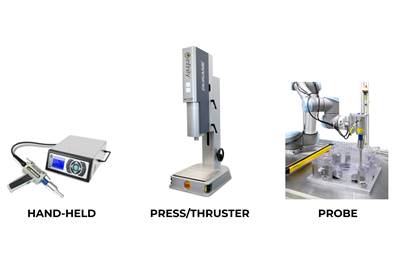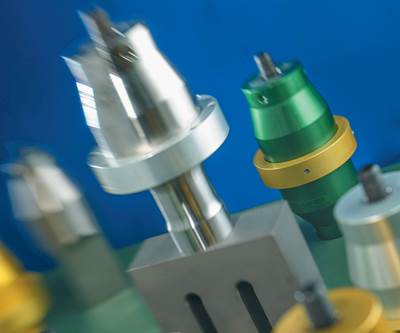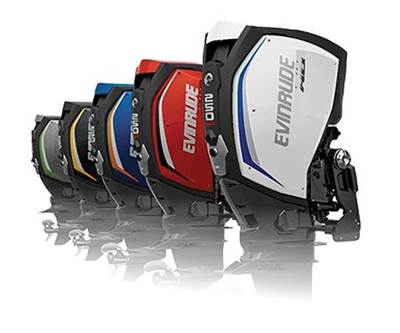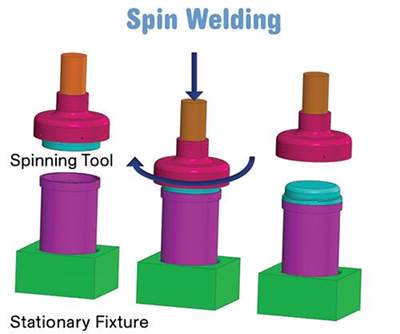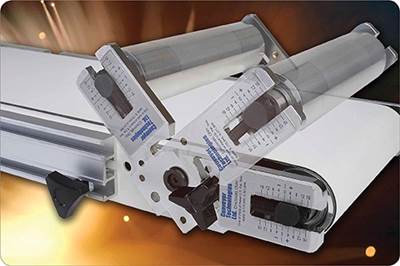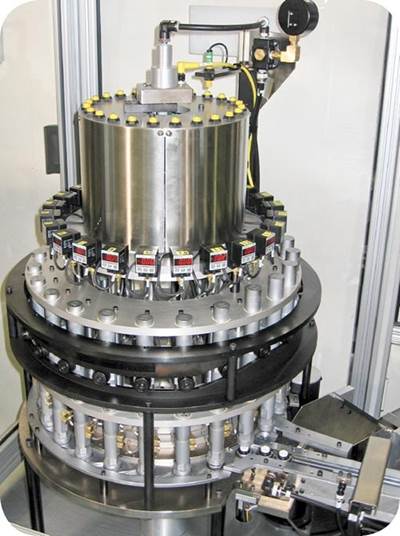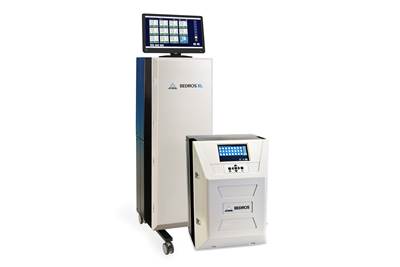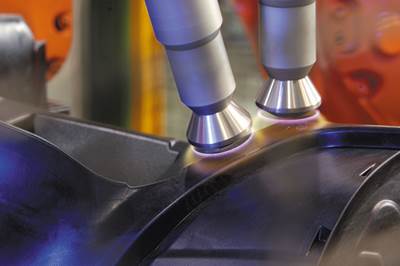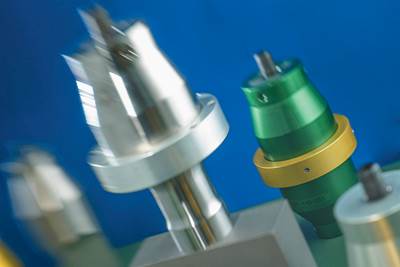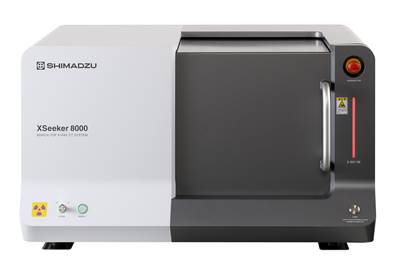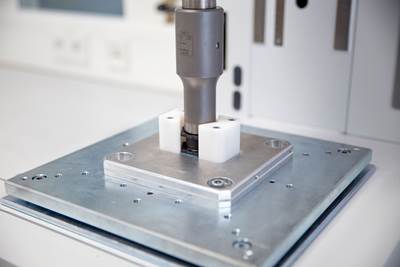Postprocessing
Post-processing and secondary operations are key to boosting value added functions for plastics processors. Learn new technologies and best practices for assembly, decoration, packaging, labeling, in-mold labeling, printing, ultrasonic welding, laser welding, vibration welding and more.

ESSENTIAL READING
VIEW ALLA Guide to Ultrasonic Welding Controls
Ultrasonic welding today is a sophisticated process that offers numerous features for precise control. Choosing from among all these options can be daunting; but this guide will help you make sense of your control features so you can approach your next welding project with the confidence of getting good results.
Read MoreHow to Solve Common Ultrasonic Welding Problems
Understand and address the likely origins of welding problems to keep production on track.
Read MoreUnderstanding the Effects of Paint On Plastics
Paint can have significant effects on mechanical properties of plastic parts. As illustrated by this OEM’s procedure in developing new-generation outboard-motor covers, there’s no substitute for thorough testing.
Read MoreHow to Select a Plastics Assembly Process
To make the proper choice, each application must be considered on its own. Each has its own particular characteristics and requirements.
Read MoreHow to Keep Your Conveyor Running Smoothly
Low-profile conveyors are ubiquitous in industry, typically used in 24/7 applications in packaging, assembly, labeling, inspection, and sorting. Here's how to keep them up and running.
Read MoreWhy & How to Assemble Parts While They’re Still Warm
For any molder seeking to maximize productivity and efficiency, carefully managing inventory and warehouse space is a key concern. One way to address this challenge is to assemble parts directly out of the mold, when they鈥檙e still warm.
Read MoreLatest Postprocessing News And Updates
Blown-Ion Plasma Treater 'Bombards' Surfaces
The treater is suited for applications requiring uniform surface treatment to improve adhesion at high speeds.
Read MoreSACMI’s PET Bottle and Labeling Machinery Integrated Into Omnia Techologies
SACMI Bottling and Labelling are now subunits of Omnia’s ACMI.
Read MoreDigital Resource for Using Atmospheric Plasma Surface Treatment
Enercon releases new eBook with technical insights on using atmospheric plasma for improving adhesion for assembly and decorating applications.
Read MorePatented Quadra Tech Features for Vibration Welding Technology
Dukane’s four new features include Q-Factor, Melt-Match, low amplitude preheat and ultrahigh frequency.
Read MoreTabletop Laser Welding System With Expanded Features
Evosys’ EvoWeld Mini is now available with a radial module and can also be equipped with a 2-micron laser.
Read MoreTransforming Laser Marking Operations With Collaborative Robotic Automation
FOBA partners with Flexxbotics and Universal Robots.
Read MoreFeatured Posts
Athena Controls Emphasizes Customization: Buy Just What You Need
At NPE, 60-year-old Athena reintroduces itself as a vendor of standard control platforms customized for maximum utility and economy.
Read MorePlasmatreat's Technology is Transforming Manufacturing with Innovation and Sustainability
NPE2024: Advancements and forward-thinking initiatives in plastics manufacturing will be highlighted.
Read MoreUltrasonic Welding: Tips, Techniques, and Troubleshooting
In this collection of content, we provide expert advice on welding from some of the leading authorities in the field, with tips on such matters as controls, as well as insights on how to solve common problems in welding.
Read MoreX-Ray Vision Inside Parts Gets More Affordable for Processors
Shimadzu’s new benchtop x-ray CT scanner provides internal and external metrology and flaw detection at a fraction of the previous cost.
Read MoreA Guide to Ultrasonic Welding Controls
Ultrasonic welding today is a sophisticated process that offers numerous features for precise control. Choosing from among all these options can be daunting; but this guide will help you make sense of your control features so you can approach your next welding project with the confidence of getting good results.
Read MoreCan Plastic Recyclates be Welded Ultrasonically?
What is possible with ultrasound? Will the result with recycled plastics material actually be worse than with standard material? Do we have to adapt our technology?
Read MoreFAQ: Postprocessing
In ultrasonic welding, high-frequency vibrations are applied to the surfaces of two parts by a vibrating tool, commonly called a “horn” or “sonotrode.” Welding occurs as the result of frictional heat generated at the interface between the parts. The ultrasonic vibrations are created by a series of components—the power supply, converter, booster, and horn—that deliver mechanical vibration to the parts.
Further Reading About Ultrasonic Welding:
A Step-by-Step Guide to Ultrasonic Welding
How to Solve Common Ultrasonic Welding Problems
Can Plasma Treatment be Used in Plastics?
In plastics, the most common plasma application is improving the bonding power of chemical adhesives; this can involve bonding metal to plastic, silicone to glass, polymers to other polymers, biological content to polymeric microtiter plates, and even bonding to fluoropolymers like PTFE.
Paint can have significant effects on mechanical properties of plastic parts. First, paint solvents may attack the plastic. In fact, it is often desirable for the paint solvents to attack (etch) the plastic to a certain extent, since this improves adhesion. However, solvents can also cause surface crazing, or even environmental stress cracking. In addition, paint solvents may cause swelling, softening, or dissolution of the polymer. Once again, a certain amount of this may help to promote adhesion, but taken to an extreme, it can degrade the properties of the plastic to unacceptable levels.
Postprocessing Supplier Categories
- UV-Resistant Coating
- Machining, Drilling, Routing Equipment
- for Plastics
- Printing Systems for Plastics
- Labels & Labeling & Decorating Equipment (In-Mold, Out-of-Mold)
- Product & Tool Design, Analysis Software (CAD/CAM/CAE)
- Adhesives for Plastics
- Vacuum Metalizing Equipment & Materials
- Cutting Tools (General)
- Cutting Tools (General)
- Ultrasonic Cutters
- Decorative Coating
- Fasteners
- Embossing & Engraving Equipment for Plastics
- Electrostatic, Spray & High-Speed Rotational
- Clamps & Fixturing Devices
- Clamps & Fixturing Devices
- Fluid-jet Cutting Systems
- General Painting Equipment (Air-Assisted, Air Atomize, Airless, Curtain, Dip, Flow, Roller, etc)
- In-Mold Coating & Equipment
- Welding & Sealing Equipment
- Conductive Coating
- Color Matching/Formulating Systems
- Adhesion Promoters for Inks & Coatings
- Hot-stamp Tooling, Foils, Presses, & Other Heat Transfer Equipment
- Design of Experiments (DOE) Software
- Ultraviolet (UV) & Electron Beam (EB) Curing
- Ultraviolet (UV) & Electron Beam (EB) Curing
- Abrasion Resistant Coating
- Laser Cutting Systems
- Laser Cutting Systems
- Flame-Resistant Coating
